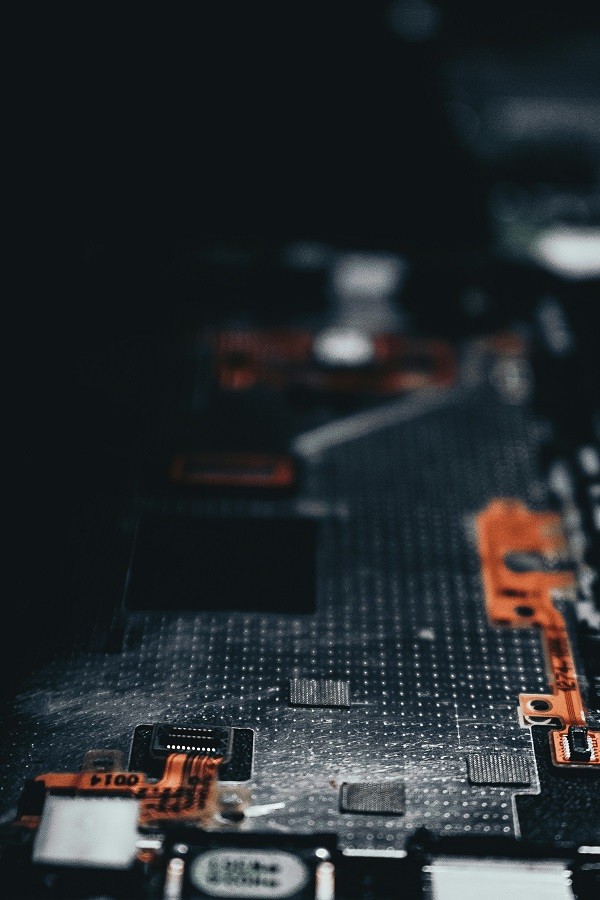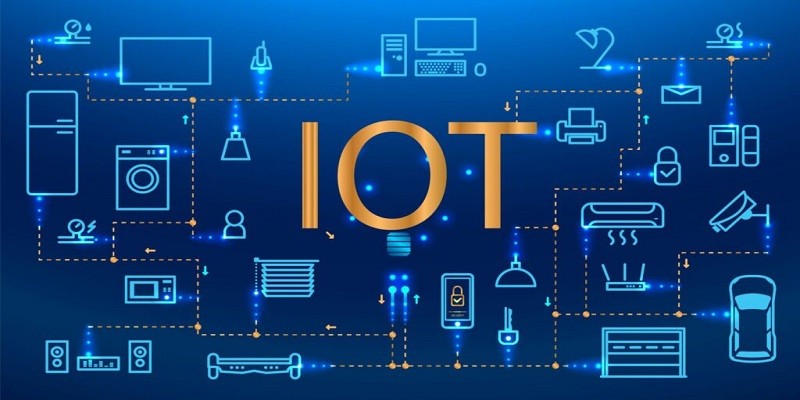The Internet of Things: How Connected Devices are Shaping Our World
The Internet of Things is shaping our world through connected devices and their immense impact on our daily lives. From smart homes to wearable technology, the interconnectedness of devices is changing the way we live, work, and interact with our environment.
With countless applications across various industries, the Internet of Things has the potential to revolutionize healthcare, transportation, agriculture, and more. As more devices become connected and data is exchanged seamlessly, we are witnessing a new era of efficiency, convenience, and innovation.
With the promise of increased productivity, improved decision-making, and enhanced safety, the Internet of Things is empowering individuals and businesses to create a smarter, more connected future.
Table of Contents
The Rise Of IoT

History Of IoT
The concept of the Internet of Things (IoT) dates back to the early 1980s when the idea of connecting devices and enabling them to communicate and interact with each other was first proposed. However, it wasn’t until the 2000s that IoT started to gain significant attention and development.
Read More – Augmented Reality in Education: A New Dimension of Learning
Growth Of IoT
Since its inception, IoT has experienced exponential growth, with an ever-increasing number of connected devices transforming the way we live and work. From smart homes to industrial automation, IoT has permeated virtually every aspect of modern society, revolutionizing the way we interact with technology and each other.
Impact On Daily Life
Living in a world where devices constantly communicate, the Internet of Things influences daily routines. Connected gadgets streamline tasks and enhance convenience, transforming homes and workplaces alike. From smart thermostats to wearable tech, IoT innovations are revolutionizing how we interact with technology.
Smart Home Technology
In today’s digital age, the Internet of Things has made its presence felt in almost every aspect of our lives, including our daily routines. With the emergence of smart home technology, our living spaces have become more efficient, convenient, and secure than ever before.
Smart home devices such as voice-controlled assistants, intelligent thermostats, and connected security systems have transformed the way we interact with our homes. With just a few taps on our smartphones or using voice commands, we can control the lighting, temperature, and even the security of our dwelling, enhancing our comfort and peace of mind.
Moreover, smart home technology has the potential to save us time and energy by automating mundane tasks. For instance, smart refrigerators can keep track of the products inside and even order groceries when supplies are running low. Additionally, smart home devices can assist the elderly or individuals with mobility issues by providing them with the ability to perform tasks that may otherwise be challenging.
Read More – Smart Homes: Integrating Technology into Everyday Life
Healthcare Applications
The Internet of Things has also made a significant impact on the healthcare industry, bringing forth a wave of innovation and revolutionizing patient care.
Smart healthcare devices such as wearable fitness trackers and remote patient monitoring systems have become increasingly widespread, aiding individuals in tracking their physical activities, heart rate, sleep patterns, and more. These devices not only empower individuals to take control of their well-being but also enable healthcare professionals to remotely monitor the health of their patients.
Furthermore, the Internet of Things has paved the way for the development of telemedicine platforms and connected medical devices. Through video consultations and remote monitoring, patients can receive medical advice, diagnosis, and treatment without needing to leave the comfort of their homes. This not only provides convenience for individuals living in remote areas but also reduces waiting times and enhances access to healthcare services for all improving the overall healthcare experience for patients.
Challenges And Concerns
Explore the evolving landscape of the Internet of Things. Challenges and concerns arise as connected devices continue to reshape our world, impacting privacy, security, and data management. Stay informed on how these transformations affect our daily lives.
Privacy And Security Issues
The rapid growth of the Internet of Things (IoT) has certainly brought numerous advantages, but it has also introduced numerous challenges and concerns. One of the most significant challenges is related to privacy and security. With a vast number of connected devices gathering, storing, and transmitting immense amounts of data, there is a heightened risk of privacy breaches and security threats.
Interoperability Challenges
Another major challenge in the realm of IoT is interoperability. As more devices are being connected to the IoT ecosystem, ensuring seamless communication and interoperability between different devices becomes crucial. Interoperability challenges arise due to the existence of various communication protocols and standards, leading to compatibility issues among different devices and IoT platforms. This lack of interoperability poses a significant barrier to the widespread adoption of IoT technology.
Potential Solutions And Steps Towards A Secure Iot Future
While the challenges and concerns surrounding IoT are significant, measures can be taken to address them. The first step towards a secure IoT future involves enhancing privacy and security mechanisms. IoT devices need to be equipped with robust encryption protocols to protect sensitive data from unauthorized access. Similarly, strict privacy policies should be put in place to govern the collection, storage, and use of personal information.
Additionally, industry-wide efforts are required to establish common protocols and standards to enable seamless interoperability between IoT devices. Collaboration among technology companies, manufacturers, and regulatory bodies is essential to develop and implement these standards effectively. This would facilitate easy integration and communication between diverse devices, promoting a connected ecosystem.
Regular firmware updates and patches play a critical role in safeguarding against security vulnerabilities. Manufacturers should prioritize continuous monitoring and timely deployment of security updates to address any discovered vulnerabilities promptly.
Education and awareness campaigns are equally important to educate users about potential risks and best practices for ensuring their privacy and security in an interconnected world. By promoting responsible IoT usage and empowering users to protect their data, we can collectively build a safer and more secure IoT environment.
While the Internet of Things offers a multitude of benefits, it also presents challenges and concerns in terms of privacy, security, and interoperability. By adopting robust privacy measures, establishing common standards, and fostering user education, we can overcome these challenges and shape a future where connected devices enhance our lives while protecting our privacy and security.
Read More – The Blockchain Revolution: Beyond Cryptocurrency
Future Trends
The future trends in the Internet of Things (IoT) are shaping the way we live and interact with technology. Advancements in AI integration with IoT and the implementation of 5G networks are driving exciting developments in connected devices, revolutionizing the way we work, communicate, and manage our daily lives.
AI Integration With IoT
Artificial intelligence is being increasingly integrated with IoT devices to enhance their functionality and efficiency. AI-powered IoT systems are capable of analyzing and interpreting data in real-time, enabling more proactive decision-making and providing valuable insights for businesses and individuals alike.
5g And IoT
The rollout of 5G networks is set to transform the IoT landscape, offering faster and more reliable connectivity for a greater number of devices. The high-speed, low-latency capabilities of 5G will enable seamless communication between IoT devices and facilitate the widespread adoption of smart technologies across various sectors, from healthcare and transportation to smart cities and industrial applications.
Frequently Asked Questions
What Is The Internet Of Things (IoT)?
Connected devices exchange data to enhance automation and efficiency in daily life.
How Do IoT Devices Benefit Society?
Enhanced efficiency, improved safety, and convenience in smart homes, healthcare, and industries.
Are There Security Risks Associated With IoT?
Yes, potential vulnerabilities in data privacy, hacking threats, and device manipulation exist.
What Industries Are Leveraging IoT Technologies?
Healthcare, agriculture, transportation, manufacturing, and smart cities integrate IoT for operational efficiencies.
How Is IoT Shaping The Future Of Technology?
Revolutionizing automation, data insights, and connectivity to transform industries and daily living.
Conclusion
In the rapidly evolving world of technology, the Internet of Things is revolutionizing how we interact with and experience the world around us. With connected devices becoming increasingly integrated into our daily lives, the potential for innovation and convenience is boundless.
As this interconnected network continues to expand, it’s clear that the Internet of Things is shaping our world in extraordinary ways, promising a future that is truly interconnected and smart.

